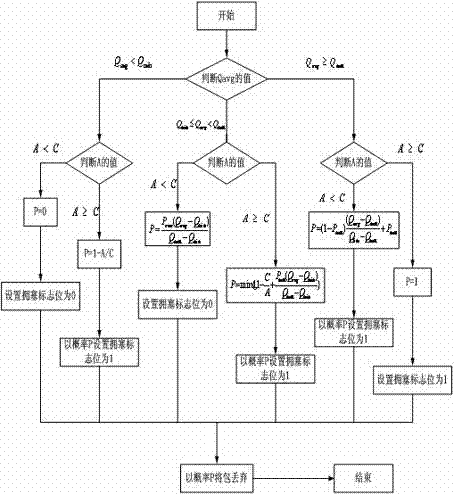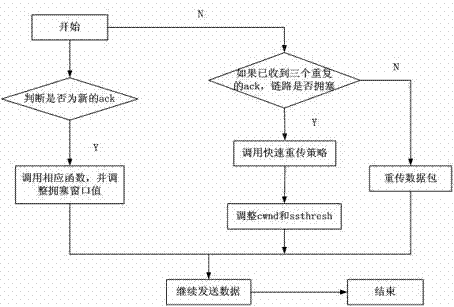A Cross-Layer Congestion Control Method in Satellite Networks
A technology of congestion control and satellite network, which is applied in the direction of data exchange network, digital transmission system, electrical components, etc. It can solve the problems of data packet loss, TCP cannot accurately predict congestion and judge network congestion and bit errors, etc., to improve throughput The effect of rate and bandwidth utilization
- Summary
- Abstract
- Description
- Claims
- Application Information
AI Technical Summary
Problems solved by technology
Method used
Image
Examples
Embodiment Construction
[0024] Method flow:
[0025] 1. Cross-layer design of the link layer
[0026] The traditional queue management adopts the tail discarding algorithm, which is easy to cause problems such as global synchronization and easy buffer filling. The basic idea of the RED congestion control mechanism is to detect congestion by monitoring the average length of the output port queue of the router. Once the congestion is found to be approaching, randomly select the connection to notify the congestion, so that they can reduce the congestion window before the queue overflows and cause packet loss. Send data speed, thereby relieving network congestion. RED is also relatively simple to implement because it is based on a FIFO queue scheduling strategy and only drops packets that are entering the router. The RED algorithm mainly includes two parts: calculating the average queue length and calculating the probability of discarding packets.
[0027] (1) Calculation of average queue length
...
PUM
 Login to View More
Login to View More Abstract
Description
Claims
Application Information
 Login to View More
Login to View More - R&D
- Intellectual Property
- Life Sciences
- Materials
- Tech Scout
- Unparalleled Data Quality
- Higher Quality Content
- 60% Fewer Hallucinations
Browse by: Latest US Patents, China's latest patents, Technical Efficacy Thesaurus, Application Domain, Technology Topic, Popular Technical Reports.
© 2025 PatSnap. All rights reserved.Legal|Privacy policy|Modern Slavery Act Transparency Statement|Sitemap|About US| Contact US: help@patsnap.com



